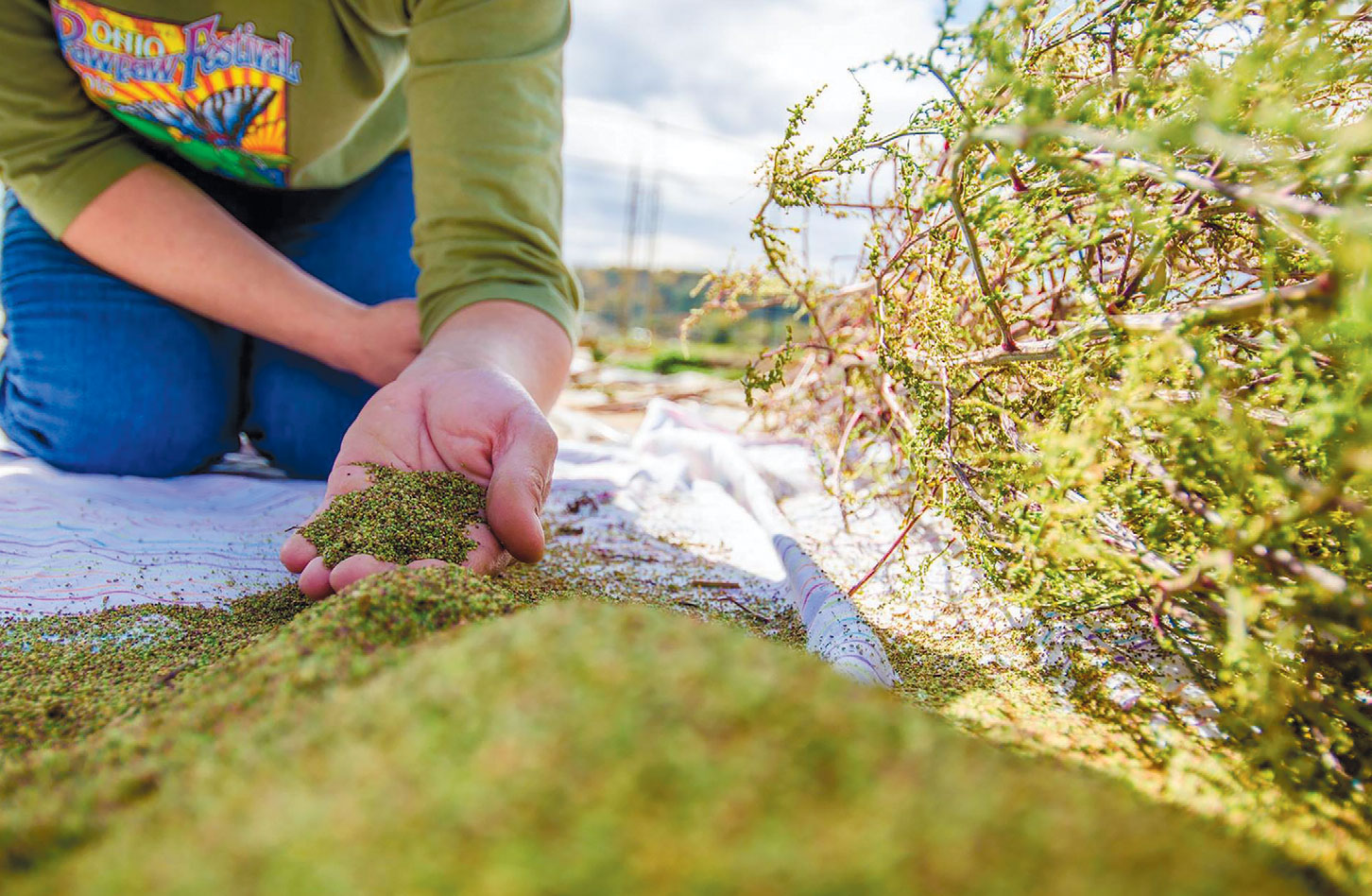The Chenopod: A Forgotten Plant
“The past can really can help guide success in the present,” says Paul E. Patton, PhD.
Paul, director of the Ohio University Archaeological Field School and Assistant Professor of Anthropology and Food Studies curriculums, has rediscovered a prehistoric seed that could potentially fight against food insecurity in the Appalachian region. The scientific name for the seed is Chenopodium berlandieri but more commonplace names include chenopods, lamb’s quarters and goosefoot. For the sake of this article, Paul refers to the seed as the chenopod and his journey in rescuing this seed begins long before he became a professional.
“As a child, my parents and grandparents instilled in me a curiosity for a world that existed outside myself,” says Paul.
From the get-go, Paul had developed an innate interest in learning about places, people and cultures that were foreign to him, and he spent most of his childhood exploring the outdoors. The more he explored, the more he became enthralled with uncovering information about the natural world surrounding him, and all of the animals and plants that populated it. The Earth was his playground growing up, so his passions for anthropology began almost instantaneously in his life. One experience in particular, however, is accredited as a pivotal moment in what would be his future archaeological career.
Paul as a child sat atop his grandfather’s lap as he steered the tractor throughout his farm, pointing out things amongst the dirt as they went, which Paul would eagerly hop off to retrieve. It was on one of these habitual trips that his grandfather found a leaf, or so that’s what he thought it was. To young Paul’s surprise, the “leaf” ended up being a projectile point (the tips fastened to the ends of spears, darts and arrow shafts) made by Native Americans 2,000 years prior.
“This ‘find’ stoked my curiosity in people that lived on our landscape before us; it became a lifelong obsession and love,” says Paul.
In 2006 he helped lead a team of students from Ohio University to excavate the prehistoric remnants on his grandfather’s farm. Their findings were astonishing—they excavated a small, domestic site where people had lived in what appeared to have been a rectangular-shaped home. They were also able to determine that the people who had once lived there were gatherers of nuts and fruits and grew native crops. One of those crops was the chenopod, and it soon became the focal point of Paul’s research and work. Ohio’s own Ash Cave actually became the next site of interest for Paul.
In 1876, 100 years after the United States was founded, geologist Ebenezer Baldwin Andrews uncovered a hoard of seeds—about 9.6 million to be exact—along the back wall of Ash Cave in the Hocking Hills of Ohio. This plethora of seeds was immediately placed in storage at the Peabody Museum of Natural History in New Haven, Connecticut. These seeds were chenopod seeds.
What archeologists hadn’t discovered until 1985, though, was that the chenopods at Ash Cave were not like regular wild seeds, they had been domesticated. In simpler terms, this discovery proved that the chenopod had been a vital source of food for the Native American peoples and that through selective breeding, they had altered the plant to such a degree that it could be distinguished from its wild relatives. Paul says that domestication, in short, refers to the manipulation of the plant over time, breeding for particular traits. The domesticated type was dependent on humans to help it grow because it was domesticated by Native Americans almost 4,000 years ago to have a thin-seed coat. This characteristic made it germinate and grow much more quickly, but also made it susceptible to harsh weather conditions.
However, only the wild type of the plant still exists in eastern North America today. The horrendous displacement and genocide of Native American cultures and the introduction of corn are two plausible explanations for the domesticated variety going extinct.
Chenopods remained an important part of the prehistoric diet for over 3000 years. If it was so successful for indigenous people in the past, its revival could certainly benefit the present generation. As of now, Paul says that the local, native variety of the chenopod is flourishing in humidity and high summer temperatures. Whereas quinoa, its sister seed, is the exact opposite: It cannot grow in warm climates. Unfortunately, many farmers throughout Ohio use herbicides to kill the plant so that it doesn’t take over their garden. But what they neglect to see is the potential the chenopod could offer the community.
“Crops that are particularly well-adapted to a region may end up being the key to stabilizing an unstable food system,” says Paul. “If we stopped wasting money resisting it, and instead started cultivating and eating it, chenopods could be one of our best and healthiest resources in the fight against food insecurity.”
Not only will it thrive in our soil and temperature, it also has higher amounts of protein and fiber and fewer carbohydrates and nearly one third of the fat in quinoa. More specifically, every 100 grams of uncooked chenopod (a little bit over one cup) offers 19 grams of protein for 42 grams of carbohydrates, whereas 100 grams of quinoa offers 12 grams of protein and 72 grams of carbohydrates. There wouldn’t be an importing cost, it could be cultivated directly in Athens County and the surrounding regions and feed the 19.8% of people who are food insecure.
“It’s bringing something back that’s origin resides in our own region,” Paul says.





